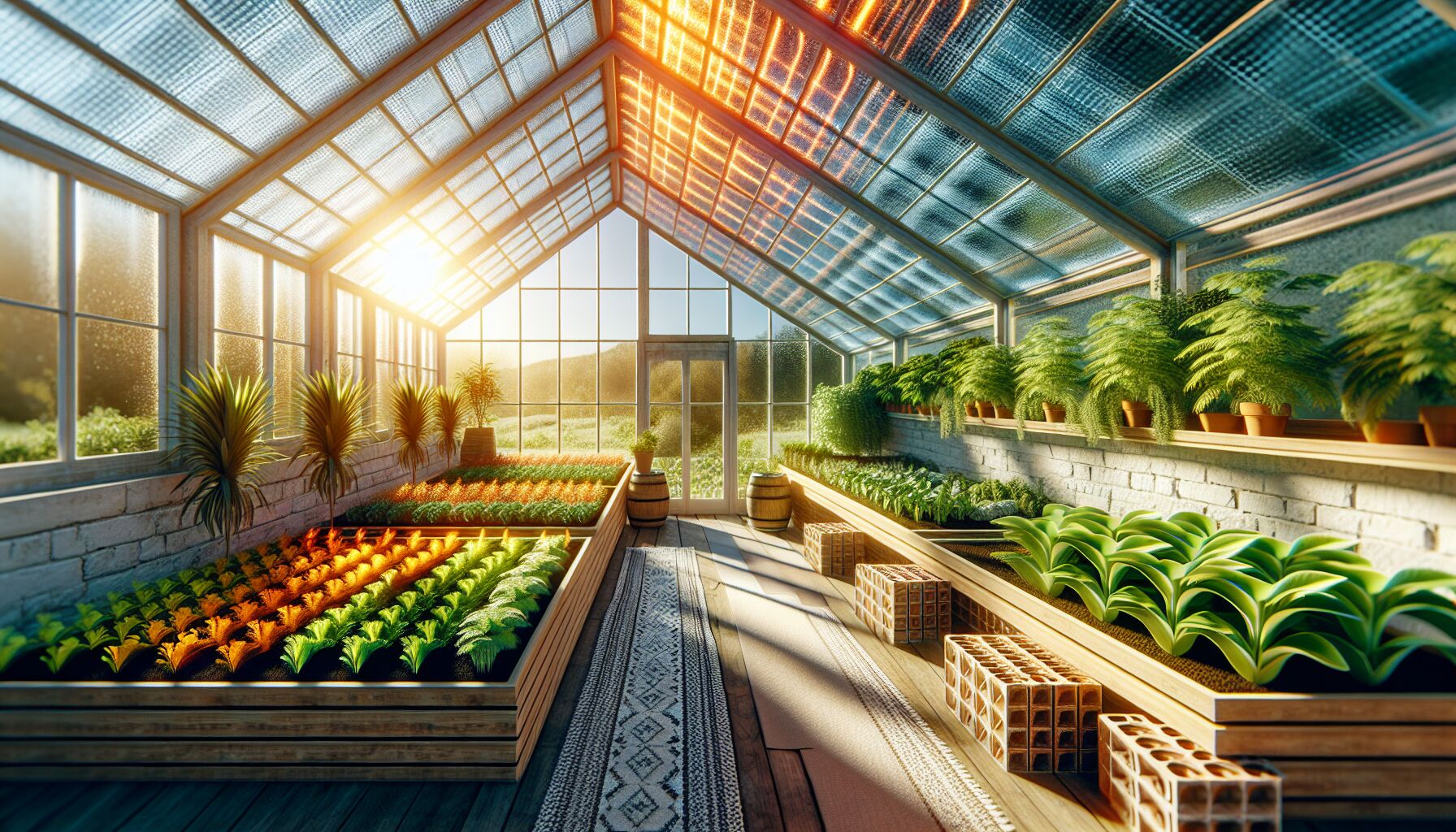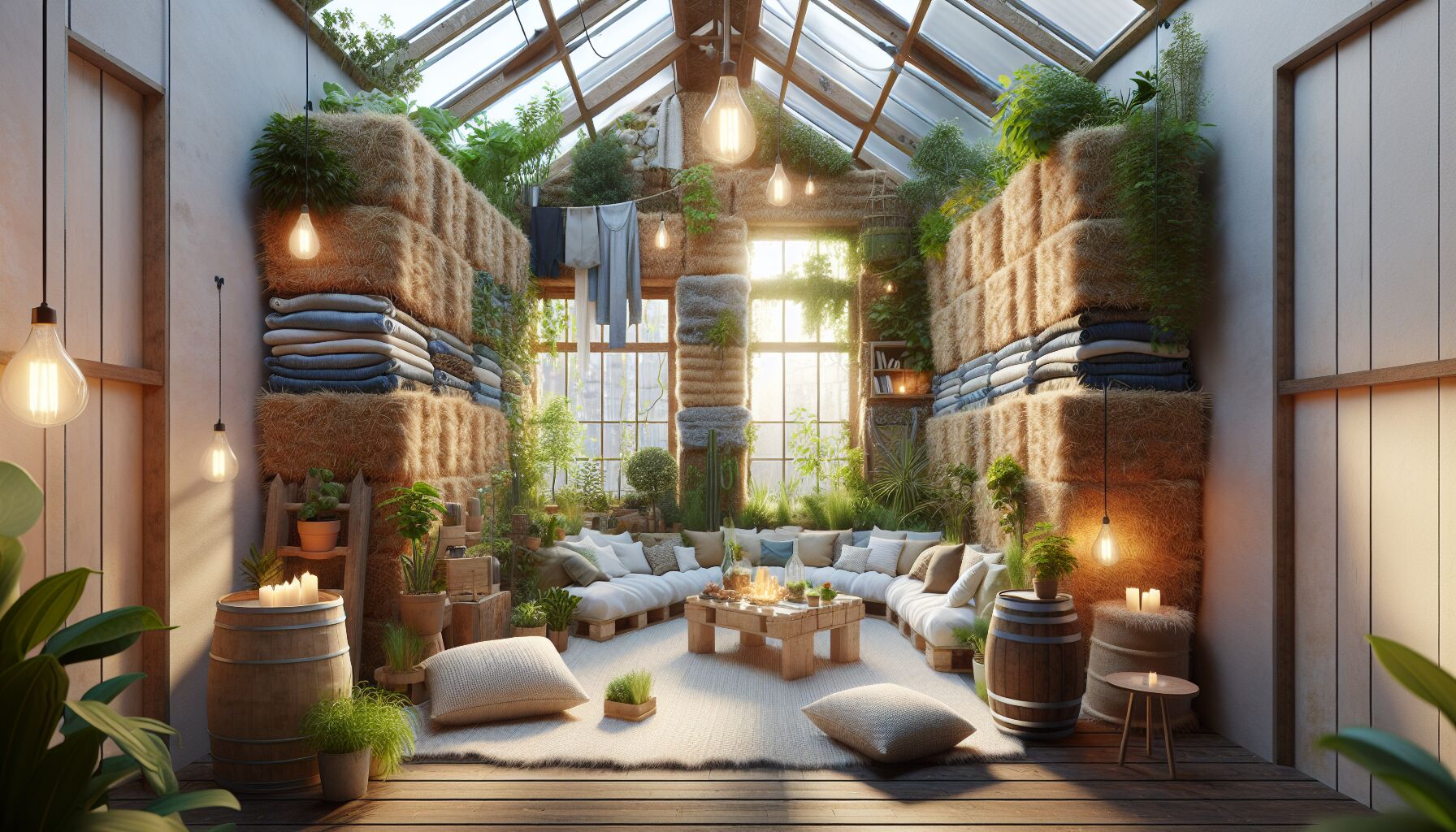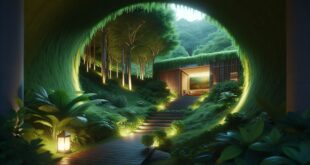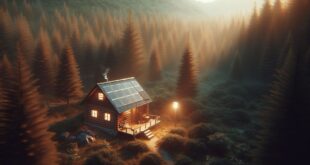 When crafting a passive solar greenhouse, the layout isn’t just about organizing space — it’s a dance with light and nature. You know what? Space optimization can make the difference between a cozy haven for plants and a tangled jungle. Imagine your greenhouse as a canvas, where the sun’s rays paint warmth and vitality. Yin and yang at play, right?
When crafting a passive solar greenhouse, the layout isn’t just about organizing space — it’s a dance with light and nature. You know what? Space optimization can make the difference between a cozy haven for plants and a tangled jungle. Imagine your greenhouse as a canvas, where the sun’s rays paint warmth and vitality. Yin and yang at play, right?
Let’s start with orientation. Facing the greenhouse south captures the dance of the sun — it’s like teaching your plants to follow the sun’s rhythm. The angle is crucial; aim for a slope between 30-50 degrees to harness maximum solar energy. Think of it as positioning your solar collector just right. South-facing orientation ensures that when the days get shorter, the panels won’t miss a beat in soaking up that precious sunlight. According to the U.S. Department of Energy, efficient sun collection reduces heat loss and keeps your greens growing even during chillier months.
The inside layout needs a bit of strategic wizardry. Picture a symphony where every instrument (or plant) has its part. Aisle space — generous enough for movement but cozy enough to maximize soil usage. Raised beds aren’t just a trend; they elevate the roots closer to the sun’s warmth, keeping them toasty.
Don’t overlook thermal mass. It’s like adding a warm blanket that wraps your greenhouse, maintaining an even temperature. You can use materials like stone, brick, or water barrels. The sun warms them during the day, and they release that heat when temperatures drop at night. This is self-sufficient food production with a dash of architectural creativity.
Storage areas for tools and seeds need planning, too. It’s easy to lose track without designated spots, and nobody wants to scramble for a trowel when inspiration strikes. With smart placement, you can nurture your off-grid farming dream — a step toward self-reliance where every inch of space serves a purpose.
Let me explain another thing: ventilation isn’t just a breeze. Proper vent placement ensures plants don’t suffocate in trapped heat. Roof vents release excess heat, while side vents bring in fresh air, just like nature intended. A natural cross-breeze reduces dependency on gadgets. It’s like breathing life into the greenhouse itself.
In the dance of light, space, and natural flows, the layout of your solar greenhouse echoes an age-old truth: that when we harmonize with nature, we become co-creators in life’s abundance. As Albert Einstein said, “Look deep into nature, and then you will understand everything better.” This journey into solar design? It’s your ticket to understanding.
Selecting the right materials
 Choosing the right materials for your passive solar greenhouse is akin to selecting the perfect instruments for an orchestra — each material plays a distinct and vital role in the harmony of the whole. And here’s the beauty of it: with thoughtful selection, you’re not just building a structure but crafting a nurturing cradle for a self-sufficient food ecosystem.
Choosing the right materials for your passive solar greenhouse is akin to selecting the perfect instruments for an orchestra — each material plays a distinct and vital role in the harmony of the whole. And here’s the beauty of it: with thoughtful selection, you’re not just building a structure but crafting a nurturing cradle for a self-sufficient food ecosystem.
Let’s start with the skeleton — the frame. Steel and aluminum both make excellent choices, providing sturdy foundations without blocking precious sunlight. Both are durable and can withstand the test of time and weather. Wood is another option; it’s a bit more soulful, with its warm, natural essence, but it requires regular care to fend off the elements. Whichever you choose, sustainability is key; look for materials that reduce environmental impact, aligning with your journey into off-grid farming.
Then, there’s the skin: the glazing. This is your greenhouse’s armor, the shield letting in light while keeping out the cold. Double-layer polycarbonate panels are quite reigning champions in this realm — they’re light, robust, and great insulators. Unlike glass, which can shatter, these panels bend under pressure and offer excellent UV protection. These high-tech panels help balance thermal dynamics, letting in that glorious sunlight and trapping precious warmth.
The floor material is often overlooked yet profoundly impacts heat regulation and moisture retention. Concrete and stone floors absorb heat during sunlit hours and release it when temperatures drop, echoing the serene rhythm of day and night. But did you know? Adding some sand can improve drainage, ensuring your roots stay healthily hydrated but not waterlogged.
Insulation is like the orchestra’s conductor, keeping everything in perfect tempo. Efficient insulation wraps your greenhouse in a comforting embrace, helping maintain consistent temperatures. Consider using straw bales or recycled denim for an eco-friendly twist. They’re both excellent insulators and feel almost like a loving hug for your plants. According to studies, effective insulation significantly conserves energy, reducing your dependence on external heating sources (U.S. Department of Energy).
With all these materials working together, you’ve got yourself a self-sufficient food system, a place where you can grow your greens year-round, irrespective of external climates. Each choice, from framing to glazing, becomes a step closer to sustainable living — an eloquent dance of self-reliance and nature’s wisdom. As Mahatma Gandhi once mused, “Earth provides enough to satisfy every man’s need, but not every man’s greed.” Your greenhouse, thoughtfully crafted, will become a testament to finding that balance, nurturing not just plants but a deeper connection with the earth itself.
Implementing temperature control strategies
 Controlling temperature effectively in your solar greenhouse is akin to conducting an orchestra — each component plays a vital role in creating a harmonious environment for year-round growth. You know, temperature can be a sneaky opponent, with the power to nurture or wither your dreams of off-grid farming. So, how do we strike the right balance?
Controlling temperature effectively in your solar greenhouse is akin to conducting an orchestra — each component plays a vital role in creating a harmonious environment for year-round growth. You know, temperature can be a sneaky opponent, with the power to nurture or wither your dreams of off-grid farming. So, how do we strike the right balance?
Let’s talk about insulation first. It’s like the cozy sweater for your greenhouse, maintaining that sweet spot where plants thrive. Imagine creating a self-sufficient food paradise, even in winter, with materials like straw bales or even recycled denim. They’re eco-friendly and wrap your greenhouse in a warm embrace. But what about those temperature drops at night? Consider a double-layered polycarbonate as a protective shell, which offers sturdy insulation and diffuses light evenly. It’s like giving your plants a gentle wake-up call each morning.
Here’s the thing about thermal mass: it’s your trusty comrade, storing heat from the sun and releasing it when the chill attempts to creep in. Whether it’s stone or brick, these materials are slow to change temperature, creating a stable microclimate. Stacked water barrels can also be a game-changer, transforming into thermal batteries that keep things snug after sunset.
Ventilation — it’s the unsung hero for avoiding the stress of overheating. Roof vents and strategic window placement create a natural airflow, like nature’s very own air conditioning system. This setup is much more than just a breeze; it’s essential for maintaining the right humidity levels too. Why rely heavily on technologies when nature offers simpler, more profound solutions?
When it comes to specific practices and tools, automated heat vents can be handy, adjusting themselves like a chameleon based on temperature needs. They’ve got sensors responding to temperature changes, letting more air in as heat ascends, or closing to conserve warmth when temperatures drop.
There’s a beautiful lesson to be found here in rhythm and balance. As Ralph Waldo Emerson pointed out, “Adopt the pace of nature: her secret is patience.” Implementing temperature control strategies in your solar greenhouse enables you to sync up with these natural cycles — teaching not only how to grow sustainably but how to coexist genuinely with the earth. So next time you step into that warm oasis, remember: you’re not just cultivating plants for self-sufficient food, but you’re nurturing a timeless bond with nature itself.
 DS Haven In Light Of Things
DS Haven In Light Of Things






